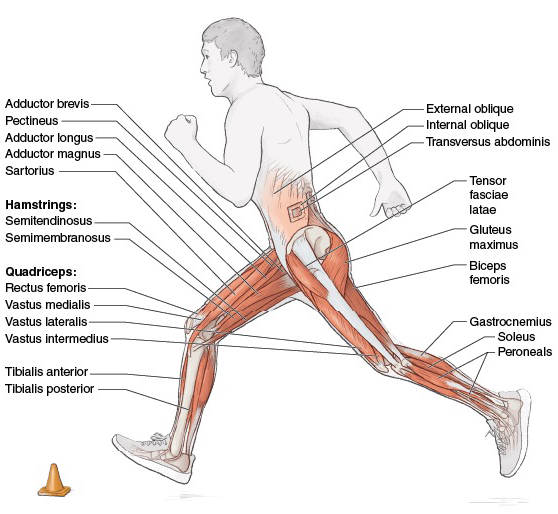
Execution
- Assume a two-point starting stance with the feet staggered.
- On a command or when ready, begin to jog forward.
- Gradually build up speed until you hit a marker on the ground or on a verbal or visual command to run at full speed.
- Continue to run at top speed until you hit another marker or are signaled to decelerate. You can alter the length of the build-up and the length of the sprint as your fitness level and level of comfort with the exercise improve.
- Be sure you have plenty of room to decelerate.
Muscles Involved
Primary: Quadriceps (rectus femoris, vastus lateralis, vastus medius, vastus intermedius), hamstrings (semitendinosus, semimembranosus, biceps femoris), gluteus maximus, gastrocnemius, soleus, tibialis posterior, peroneals, tibialis anterior, iliopsoas, tensor fasciae latae, sartorius, adductor longus, adductor brevis, adductor magnus, pectineus
Secondary: Internal oblique, external oblique, transversus abdominis
Hockey Focus
A player will experience multiple changes of tempo when playing. It is important to be able to change tempo and achieve maximum speed as quickly as possible, but it is also important to improve that top speed. This type of overspeed training develops stride length off the ice, thereby enhancing speed on the ice.
